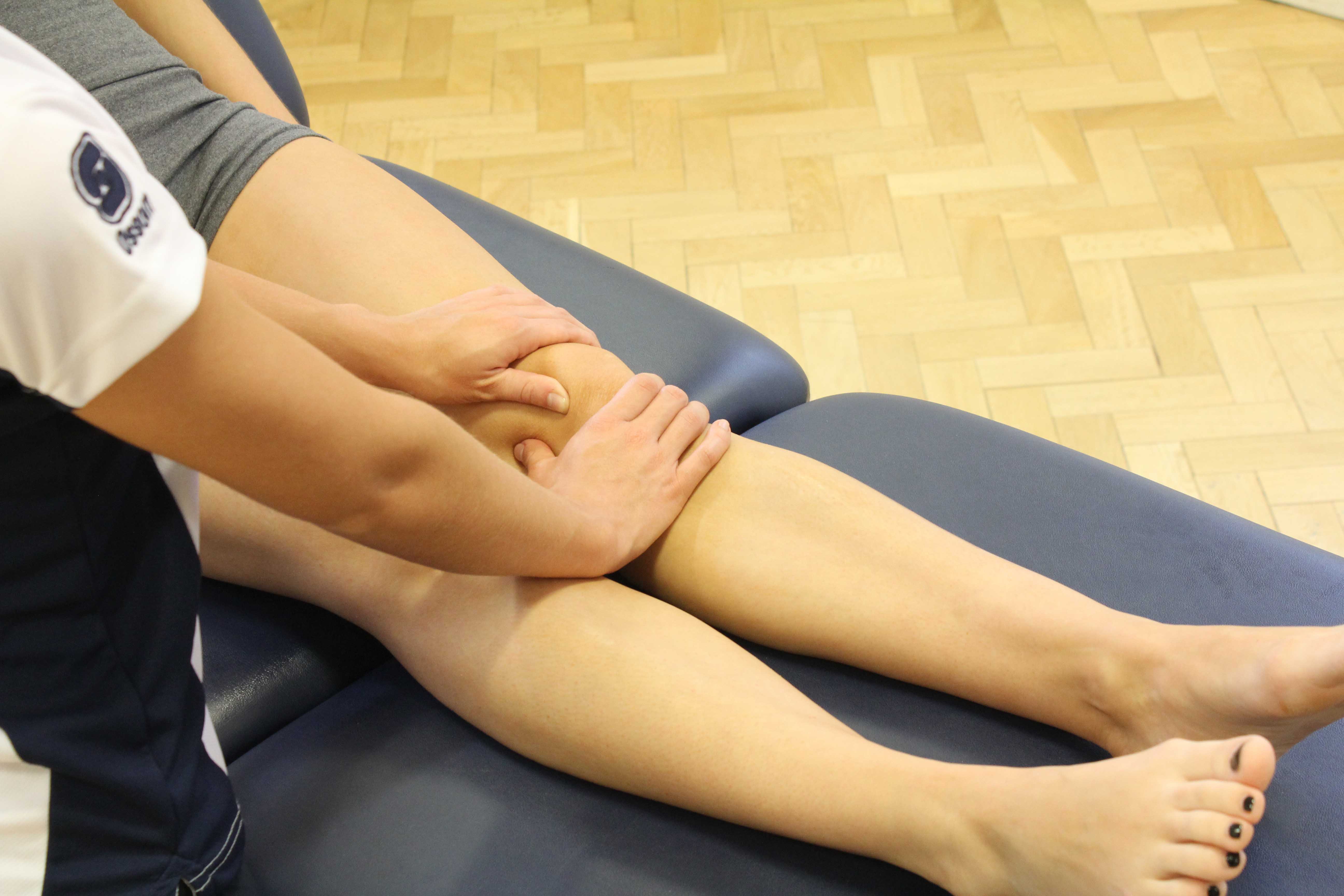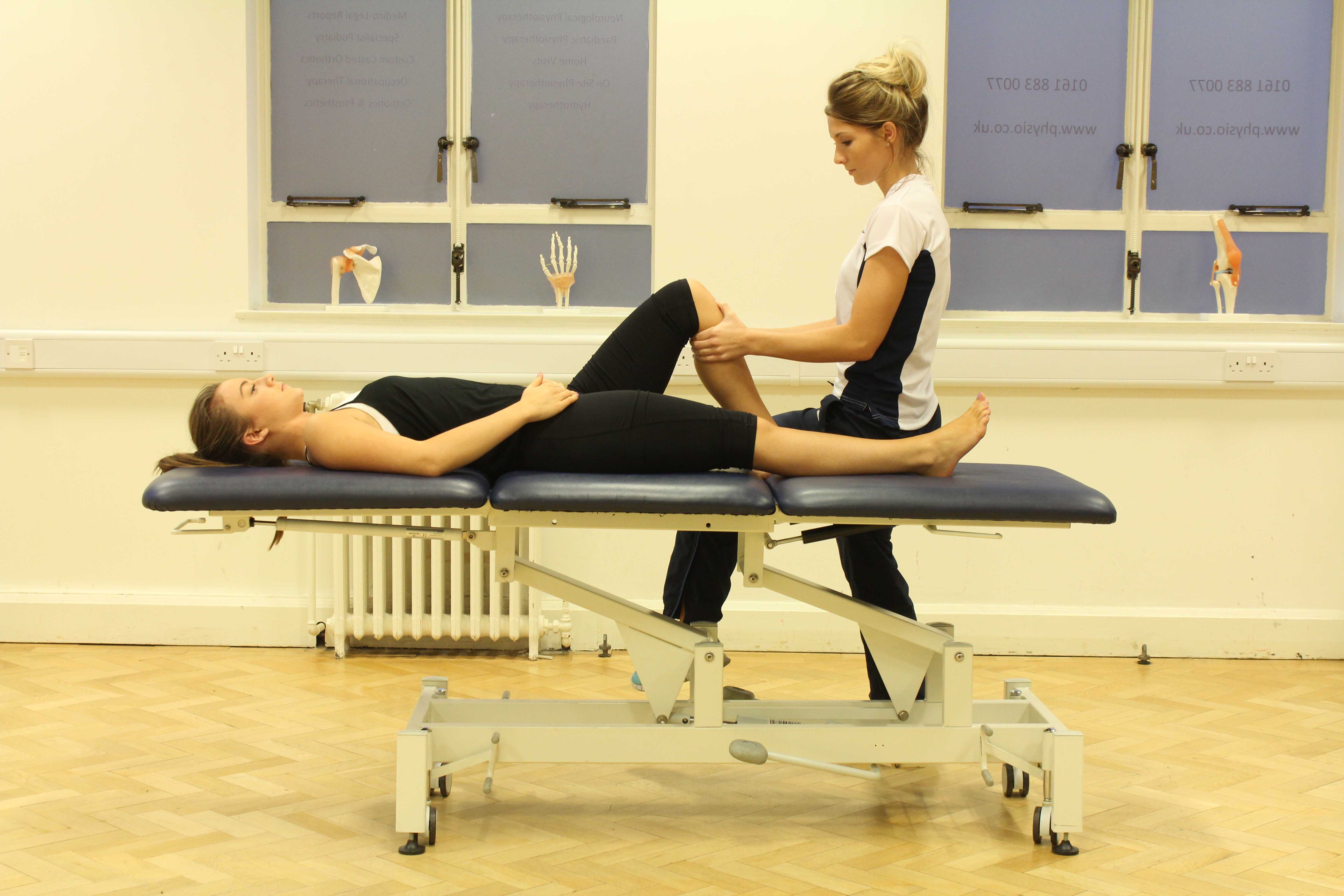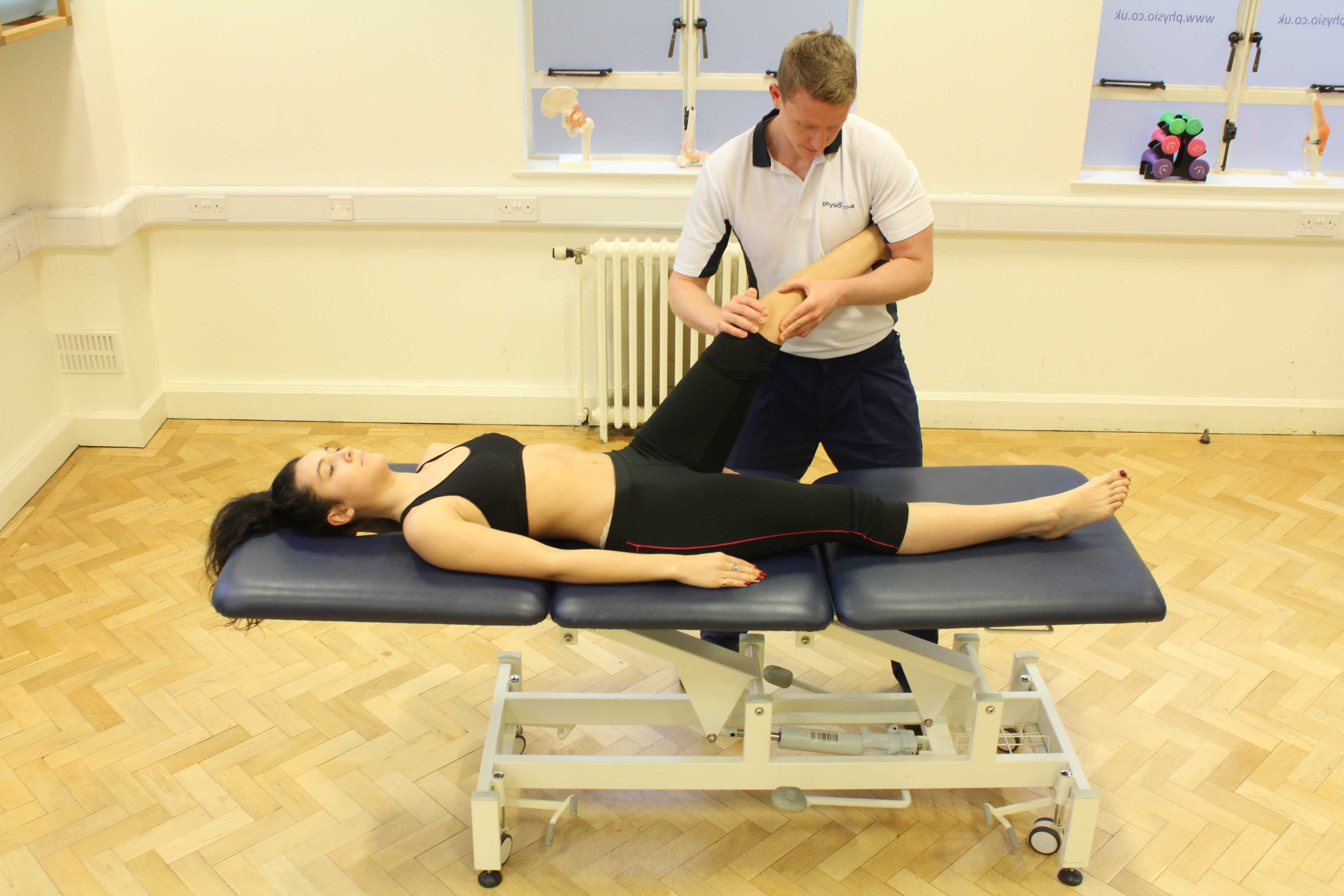What is Posterior Cruciate Ligament Surgery (PCL)?
Posterior cruciate ligament (PCL) surgery is the reconstruction or repair of the PCL ligament that may be required in some cases if the PCL has been injured or torn. PCL injuries are usually caused by a direct blow to the tibia(shin bone) when the knee is bent, this forces the bone backwards on thefemur (thigh bone). This can happen during sports, a motor vehicle accident, trauma or fall.
Unlike an anterior cruciate ligament (ACL) injury which causes giving way, an injury to the PCL is more likely to cause a deep knee pain which can be felt at the back of the knee or inside the knee. In more severe cases such as a complete tear, the injury can cause instability of the knee. As the PCL ligament cannot heal on its own surgery may be necessary to replace the injured ligament with a new ligament. This is called PCL reconstruction. PCL reconstruction can lead to improved knee stability, function and prevent more damage or problems in the future.
Additionally, PCL surgery with a combined physiotherapy programme provided by Physio.co.uk will offer a near normal knee and the ability to return to work, hobbies, everyday activities and sport.
The PCL is reconstructed firstly using an arthroscopic technique (key hole) so that the entire knee joint can be evaluated and any damaged tissue can be reconstructed or repaired through a small incision. The main aim of PCL reconstruction is to reconstruct the injured ligament using a replacement graft. This is often taken from the Achilles tendon.
 Above: Patella mobilisations performed by MSK Physiotherapist
Above: Patella mobilisations performed by MSK PhysiotherapistPCL surgery options:
- Graft Choices – what is used for the reconstruction:
- Autografts - donor from another part of own body
- Allograft - donor from another person
- Synthetic - artificial donor
- Donor Site - where the graft is taken from:
- Bone-patellar tendon-bone (BPTB)
- Quadrupled hamstrings (Semitendinus&Gracilis)
- Quadriceps tendon
- Achilles’ tendon
- Hamstrings
- Quadriceps tendon
- Fascia lata
- Graft Fixation- how the graft is secured:
- Screws (Biodegradable and Metalic)
- Transfix Pin
- Crosspin / transfix
- Endobuttom Loop
- Scaffhod / matrix
- Bundles – how the graft is made:
- One bundle – less expensive with quicker surgery time
- Two bundle – more expensive and a better quality of graft that resembles the ACL more
 Above: Mobilisations of the knee joint by a MSK therapist
Above: Mobilisations of the knee joint by a MSK therapistPhysiotherapy for PCL surgery
Pre surgery physiotherapy
Physiotherapy should start immediately after you have torn your PCL. The initial physiotherapy at Physio.co.uk will focus on reducing pain, swelling and restoring the full range of motion in your knee. If surgery is required, Physiotherapy at this stage will better prepare your knee for the surgery. The main aims of physiotherapy prior to your operation is to strengthen the muscles around your knee, regain as much range of movement as possible, reduce swelling and reduce pain. On top of this it is important to strengthen the muscles in and around other joints such as your hip joint and ankle joint to support your knee and aim to regain weight bearing as much as possible. Physio.co.uk will write a specific programme for you prior to the operation to ensure you are fully prepared for the surgery.
 Above: Stability and strength training for the knee, supervised by a MSK Physiotherapist
Above: Stability and strength training for the knee, supervised by a MSK PhysiotherapistSymptoms post surgery
Common symptoms that you will experience after you have had PCL surgery will include continued pain, swelling, stiffness, muscle weakness, reduced muscle control in and around your knee and loss of proprioception (balance).
You will be given crutches after the surgery and as weight bearing can lead to early stress on the graft, you may not be allowed to weight bear fully on your knee for up to 6 weeks. You will also be given a brace to wear for up to3 weeks to further support and stabilise your knee. Also, you will be unable to drive for up to 6 weeks post surgery.
 Above: Patella mobilisations performed by MSK Physiotherapist
Above: Patella mobilisations performed by MSK PhysiotherapistPost surgery physiotherapy
It is essential that you take part in a physiotherapyrehabilitation programme immediately after your PCL surgery as this is important in regaining full function of your knee.
In the initial stage after the surgery, treatment with Physio.co.uk will focus on allowing tissues to heal, reducing your pain, reducing any swelling and stiffness, improving range of movement in your knee and improving or maintaining as much muscle strength as possible.
With time, your Physio.co.uk rehabilitation programme will focus on restoring pre injury function in your knees. This can be done by strengthening the muscles in and around your knee as well as strengthening the muscles around your hip and ankle to provide further stability and support for you knee. Other important factors that your rehabilitation will involve include regaining joint proprioception, gait re-education, muscle control and cardiovascular fitness.
In the long term after you have had PCL surgery, Physio.co.uk aims for you to return to your pre injury condition using exercises specific to your job hobbies and sporting activities.
Treatments included in rehabilitation post ACL surgery:
0-2 Week
The main goals ofphysiotherapy in the first couple of weeks post surgery are to minimise pain, reduce swelling, promote good circulation, prevent post operative complications and improve your confidence and independence.
You will at this point still be reliant on elbow crutches and be wearing a brace therefore initial exercises will include:
- Contraction of the quadricep muscles (isometric)
- Patella mobilisations (movement of knee cap)
- Circulation exercises
- Exercises that bring your leg out to side and back again
- Exercises that work the muscles of your buttocks
- Upper body exercises
- Core exercises (e.g. tensing of the abdominals)
- Flexibility and stretching exercises
2-4 weeks
During the second and fourth week after your operation the main aims of physiotherapy will include:
- Continuation of aims in the initial 2 weeks
- Improve muscle strength in muscles in and around your knee
- Promote normal gait patterns
- Improve proprioception (balance)
- Prevent scar adherence
- Continuation of exercises from first few weeks
- Gait re-education
- Quadriceps and hamstring exercises with resistance as tolerated
- Proprioception exercises
- Straight leg raise exercises
4-6 weeks
In this phase, the aims are similar to those in the previous phases with exercises focused on improving muscle strength in and around the knee, promotion of gait patterns and the improvement of proprioception (balance)
In addition to this, this phase also aims to include aerobic and muscle exercises to help improve cardiovascular fitness. Exercises may include static cycling with a gradual increase in resistance as tolerated with further increases in exercises from the previous few weeks. Furthermore, by the end of this phase you should ideally be moving independently without the use of aids.
6-12 weeks
Physio.co.uk’s main goals between the 6th and 12th week are to continue to improve proprioception and normal gait patternswhilst further increasing muscle strength, power and endurance. At this point, the goal is also to achieve full range of movement in your knee.
Exercises will include:
- Gait re-education exercises
- Quadriceps and hamstring exercises with resistance as tolerated
- Proprioception exercises
- Static cycling with increased resistance as tolerated
- Stepper can be included
- Rower with increased resistance/duration as tolerated
3-6 months
During this time, aims of your physiotherapy programme with Physio.co.uk will include improvement of hamstring strength, quadracep strength and other muscles supporting your knee. The programme also aims to regain lower limb muscle balance and improve lower limb function at this time. Most importantly the goal is to continue progress of exercises from previous weeks/months.
Exercises will include:
- Gait re-education exercises
- Quadriceps and hamstring exercises with resistance as tolerated
- Proprioception exercises
- Static cycling with increased resistance as tolerated
- Stepper can be included
- Rower with increased resistance/duration as tolerated
- Swimming or hydrotherapy including pool running (not breast stroke)
- Early plyometrics (jumping exercises)
- Light agility exercises (changing direction)
6-9 months
Now it’s time for your physiotherapist from Physio.co.uk to improve your speed as well as continuing your strength improvements in the muscles around your knee. Improvements in force, endurance and quality of your movements will also be major goals. Additionally, rehabilitation at Physio.co.uk will now gear towards focusing on exercises that are specific to your sport, hobby or job. Full preparation will now begin for you to return to any activities you took part in prior to your injury.
Exercises will include:
- Continuation of exercises from previous weeks
- Agility training (change of direction)
- Running with a gradual increase in pace/ duration or inclination as tolerated
- Plyometric training(jumping)
- Sport specific exercises
- Job or hobby specific exercises
9 months
Physio.co.uk expects that by this time you should be experiencing symptom free training and rehabilitation after this point aims for you to be able to carry out unrestricted and confident function. You may even be almost back to a pre injury condition. This is also the earliest point when you can return to sport after you have undergone PCL surgery.
Success of rehabilitation
The decision that you can return to unrestricted functions or sporting activities will depend on a number of factors:
- Commitment and adherence to rehabilitation program
- Rate of progression throughout rehabilitation program (too slow or too fast)
- Surgical technique
- Other injuries sustained before, during or after the ACL injury
- Any other underlying health problems e.g. arthritis
- Psychological influences
Summary
An injury or tear to the Posterior cruciate ligament (PCL) will cause pain and instability in the knee joint. PCL surgery is the reconstruction or repair of a torn PCL ligament which is vital in severe tears to regain the stability and full function in your knee. PCL surgery will also prevent further injuries or damage to the PCL itself and other structures in the knee including aiding in the prevention of potential osteoarthritis. PCL surgery will provide a near normal knee and allows a more rapid return to everyday activities, work, hobbies, and sport. Furthermore, a physiotherapy programme with Physio.co.uk is highly important in the full and fast recovery of your knee after PCL surgery.Call Physio.co.uk on 0330 088 7800 to make an appointment now!

 0330 088 7800
0330 088 7800

































